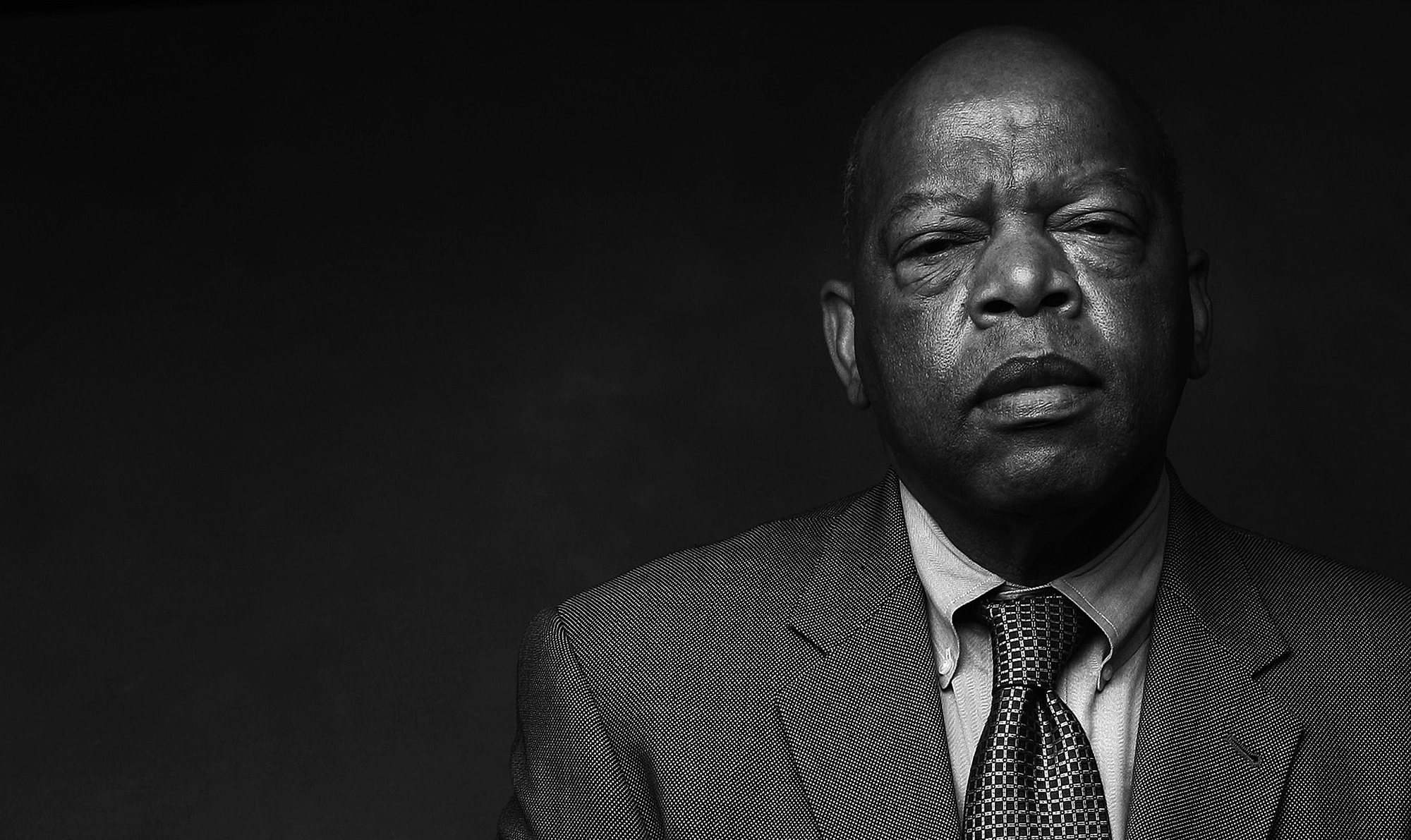Before the sit-ins and freedom rides, before nearly dying at the hand of an Alabama state trooper at the Edmund Pettus Bridge and before ascending to the top ranks of Democratic politics, John Lewis wanted to be a preacher.
As a young boy tending to his family’s chickens in rural Pike County, Ala., the future Georgia congressman would assemble the landfowl onto their roosts and recite Bible verses to them nearly every evening. He even conducted funeral services and the occasional baptism.
Lewis’ central role in the civil rights movement put an end to his pulpit dreams. But his moral clarity and unwavering commitment to nonviolence and the “beloved community” – a democracy of racial, social and economic equality – infused every chapter of his life. It also earned him the respect of a nation that early-on feared his presence.
Lewis, who played a 60-year, outsized role on America’s stage, from organizing lunch-counter sit-ins to becoming the face of political resistance to President Donald Trump, died July 17, 2020, after a battle with cancer, his office confirmed. He was 80 years old.
“It is with inconsolable grief and enduring sadness that we announce the passing of U.S. Rep. John Lewis,” Lewis spokeswoman Brenda Jones said in a written statement early Saturday. “He was honored and respected as the conscience of the US Congress and an icon of American history, but we knew him as a loving father and brother. He was a stalwart champion in the on-going struggle to demand respect for the dignity and worth of every human being. He dedicated his entire life to non-violent activism and was an outspoken advocate in the struggle for equal justice in America. He will be deeply missed.”
Lewis is survived by his son, John-Miles Lewis, six siblings and about 30 nieces and nephews. His wife of 44 years, Lillian Miles Lewis, died in 2012.
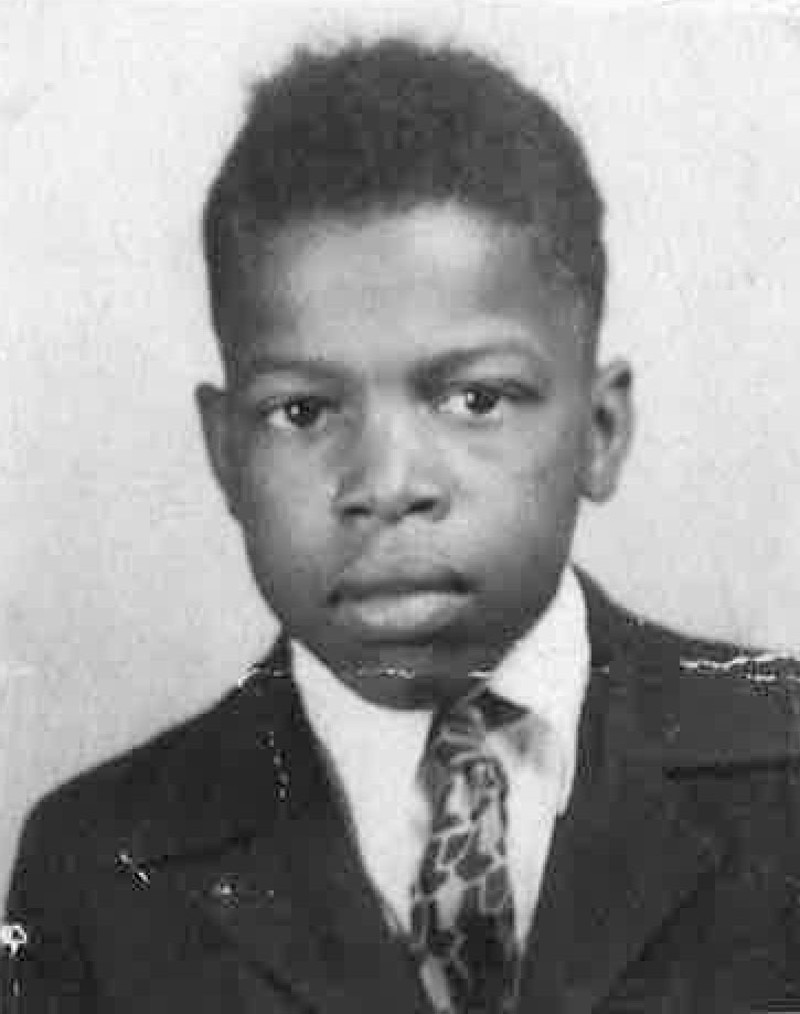
Becoming the Boy from Troy
John Robert Lewis was born Feb. 21, 1940, to sharecroppers Willie Mae and Eddie Lewis in Troy, Ala., at at a time when the Deep South was the epicenter of legalized racism and discrimination. He was one of 10 children.
In that atmosphere, Bob Lewis, as he was called by his father, was given an early and tough life lesson by his parents: there was little to be gained and much to lose in rebelling against the system.
“They would say, ‘That’s the way it is. Don’t get in trouble. Don’t get in the way,’” Lewis said later.

But the “Whites Only” signs he saw, from water fountains to the best seats in the movie theater, ignited a slow burn inside him. Even in places where no placards hung, like the voter registration office at the county courthouse, he understood that the unspoken apartheid rules applied. The impression that made on the young boy was so deep that Lewis seldom went to movie theaters even years later when he could have chosen any seat he wished.
In the 1950s, even in rural Pike County, the sounds of a brewing revolution could be heard, for those who had ears to hear them.
The 1954 Brown vs. Board of Education ruling from the U.S. Supreme Court struck down the separate-but-equal doctrine, which allowed schools to segregate the 15-year-old Lewis from his white neighbors. Lewis recalled in his 1998 memoir “Walking With the Wind” that Alabama politicians quickly vowed to disobey the ruling.

But it “turned my life upside down,” he wrote. Not long after the ruling, the radio brought to town the voice of a young preacher from Atlanta, eloquently denouncing racism and encouraging Lewis to disobey his parents’ advice to keep his head down.
It seemed as though the Rev. Martin Luther King Jr. “was speaking directly to me,” Lewis recalled.
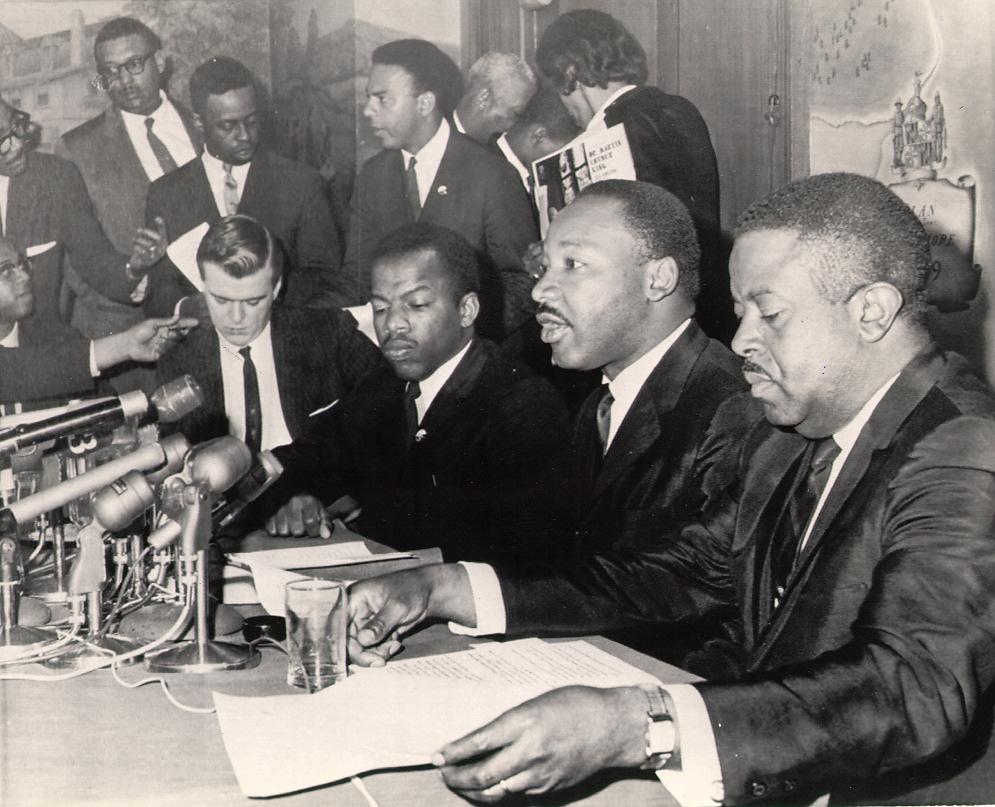
“I felt like he was saying, ‘John Lewis, you can do it. You can make a difference in the struggle to defend the dignity of all humankind.’”
A short time later, Lewis waged his first battle against segregation. He walked into the Troy public library and asked for a library card. Blacks helped pay for the library with their taxes, but couldn’t check out a book. Turned down, the teenager went home and drafted a petition calling for equal access. He found few Blacks willing to sign the petition in those dangerous days, but he submitted it.
He never heard back.
He graduated high school and refocused on becoming a minister, but couldn’t ignore his calling to challenge the injustice he saw. While attending American Baptist Theological Seminary in Nashville, he issued a bigger challenge. He sent an application to all-white Troy State University in his hometown. African American students were doing the same across the U.S. in an organized effort to force the question of the Brown vs. Board of Education ruling.
Troy State, like the library, never replied.
Lewis was going to push this time. He looked for support from the voice on the radio. He wrote a letter to King, now the pastor of Dexter Avenue Baptist Church in nearby Montgomery, asking for help. King sent Lewis an invitation and bus ticket.
“I was overwhelmed,” Lewis would later recall. “I kept telling myself to be calm, that fate was moving now, that I was in the hands of that spirit of history.”
He was 18.
“So, you’re John Lewis,” King greeted the young man who would become an ardent supporter, protégé and colleague. King dubbed him “the Boy from Troy,” a nickname Lewis carried the rest of his life.

Chapter 2
Becoming something more
King offered his help, but Lewis’ mother’s voice was also in his ear. She worried her son’s actions would put the family’s land, livelihood and possibly lives in danger of violence.
Still, Lewis was determined to bring change to the system. Back in Nashville, he committed himself to a life of “good trouble,” his twist on advice from his family not to rock the boat.
There, he put into practice the things he learned from his mentor Jim Lawson, who exposed him to the teachings of Mohandas Gandhi and Henry David Thoreau: nonviolent direct action, civil disobedience, love and reconciliation. Lewis and other young activists began organizing sit-ins at segregated Nashville restaurants, department stores and movie theaters.
“Among so many other things, this was about education, pricking consciences, teaching one race about another, and, if need be, about itself,” Lewis said.

Two days after John F. Kennedy was elected president in 1960, Lewis was involved in a sit-in of a local restaurant. The owner turned on the fumigator and left, locking Lewis and his friend James Bevel inside. By the time firefighters freed them, the two had almost choked to death on insecticide.
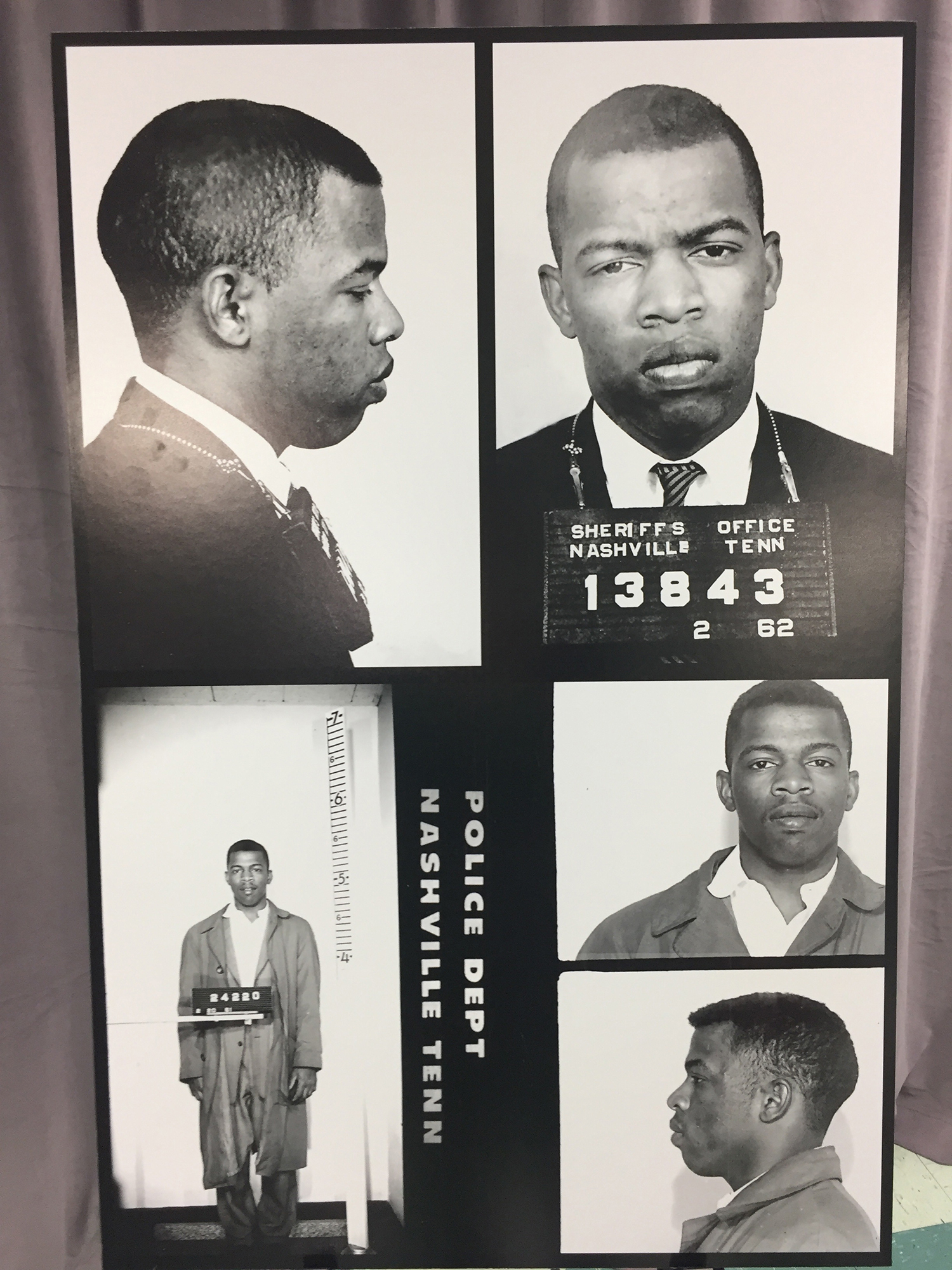
Not long after, Lewis spent his 21st birthday in jail for blocking the entrance of a segregated theater.
He helped found the Student Nonviolent Coordinating Committee, which helped spread civil disobedience across America.
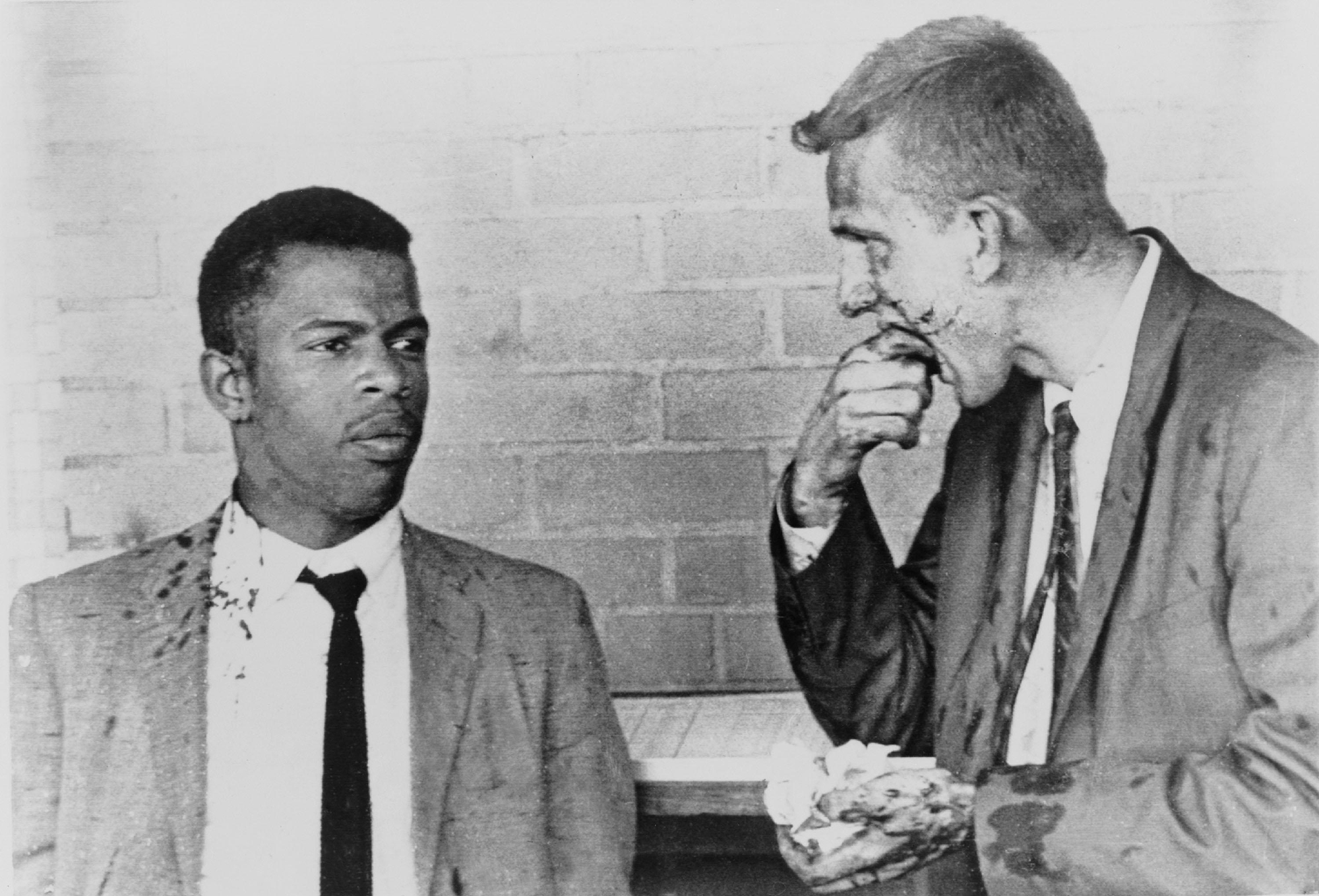
Now, he was drawing national attention. His leadership of SNCC put him at the receiving end of violence, arrests and government denunciations of him as a communist and a militant threat.
Lewis was on the buses of the 1961 Freedom Rides, a series of trips through the South that tested a new Supreme Court order desegregating interstate transportation facilities. He endured an attack from a Klansman in Rock Hill, S.C., and was nearly beaten to death in Alabama and Mississippi for trying to use the “Whites Only” restrooms and waiting areas. The Greyhound bus Lewis was supposed to be riding was firebombed in in Anniston, Ala.
He was also involved in a historic event, helping plan the 1963 March on Washington as one of the Big Six — the men who were leading the movement, including King, James Farmer, A. Philip Randolph, Roy Wilkins and Whitney Young.
In June 1963, Lewis moved to Atlanta, taking up residence in a sparse second-floor walk-up in the southwest corner of the city. He had barely unpacked his bags before he and other civil rights leaders were invited to White House. President John F. Kennedy, who would be assassinated a few months later, had concerns about the impending march.
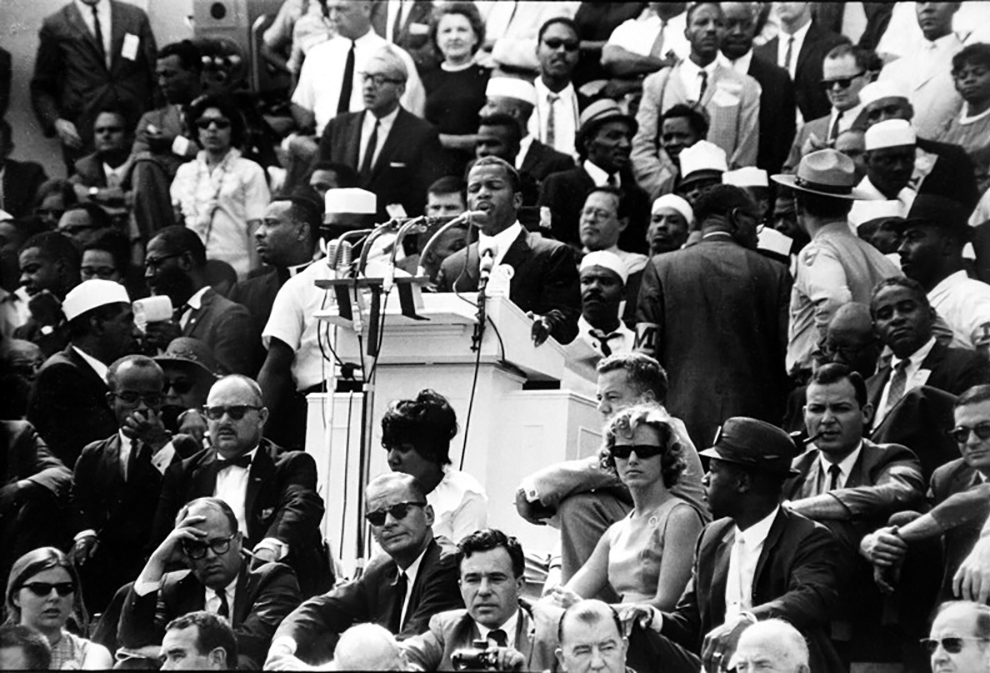
“We cannot be patient, we do not want to be free gradually. We want our freedom, and we want it now.”
The peaceful event drew 200,000 people to the National Mall, all pushing for more federal attention to the electoral, social and economic plight of Blacks. That muggy August day lives on in America’s collective memory as the day King articulated his dream for an equal society. But Lewis, then 23, delivered the event’s most controversial address, rife with frustration and anger at the “cheap politicians” whose inaction perpetuated inequality. The Kennedy administration and march leaders implored him to soften it at the eleventh hour.
“To those who have said, ‘Be patient and wait,’ we must say that ‘patience is a dirty and nasty word,’” Lewis stated in his original speech. “We cannot be patient, we do not want to be free gradually. We want our freedom, and we want it now.”
The crowd’s applause interrupted Lewis 14 times.
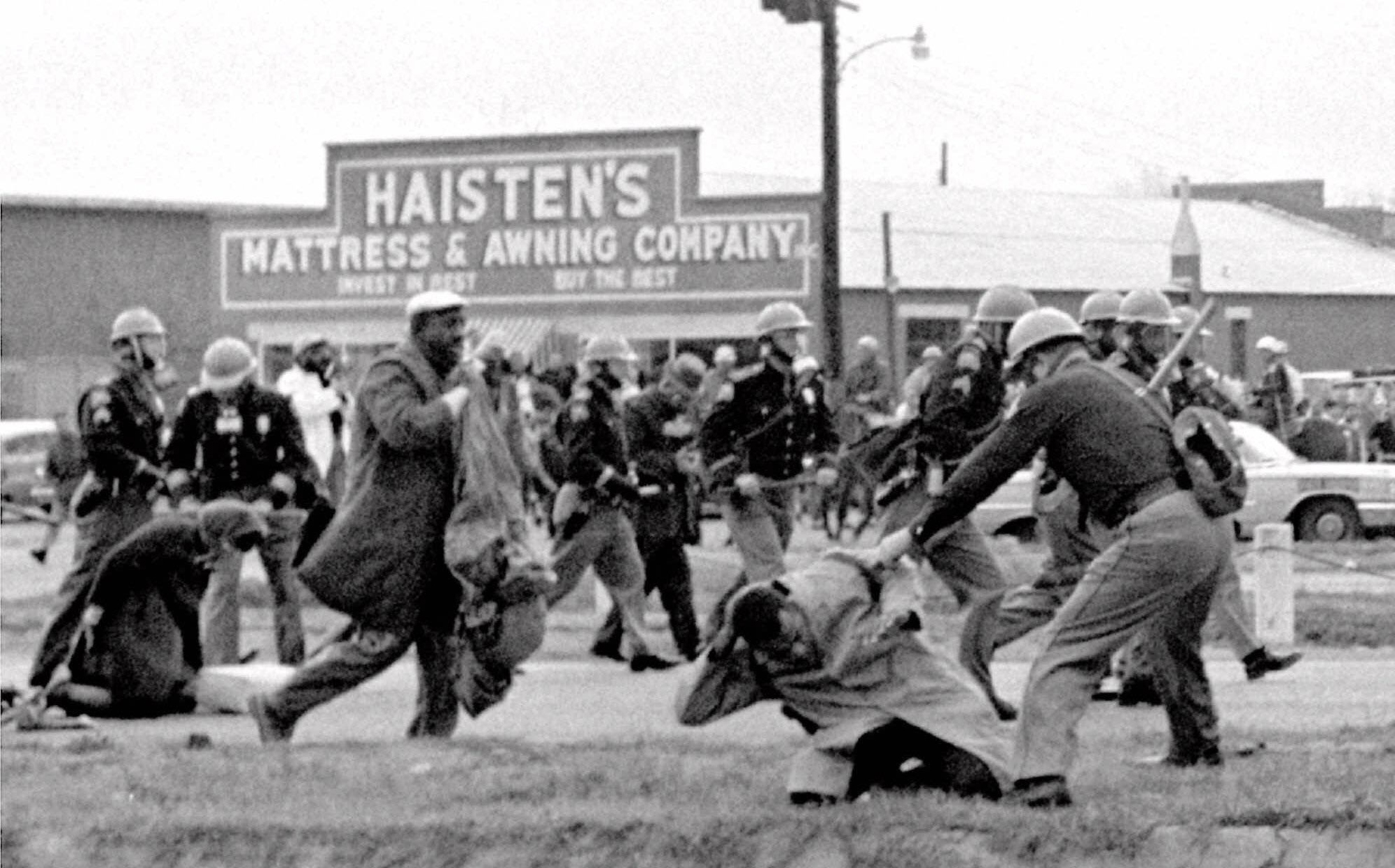
Chapter 3
An end and a beginning
Lewis again was thrown into the nation’s eye on March 7, 1965, when ABC’s airing of the movie “Judgment at Nuremberg” was interrupted by a special news report with footage of white police officers and onlookers beating unarmed Black marchers on the Edmund Pettus Bridge in Selma, Ala. Featured prominently in the film was a young Black man on his knees, John Lewis, in a trench coat and backpack, trying to ward off a cop’s billy club blow.
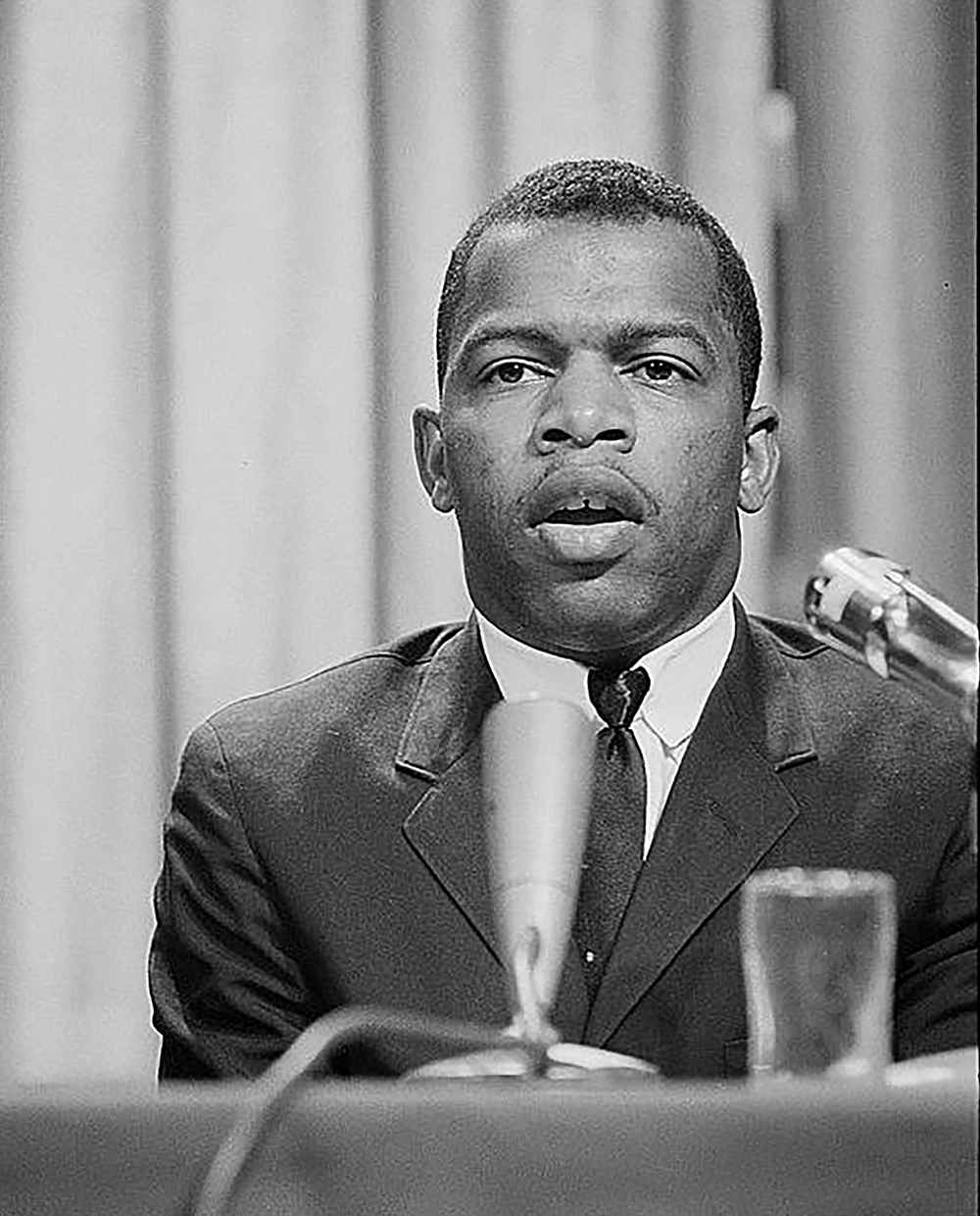
“We had no chance to turn and retreat,” Lewis wrote in his autobiography. “I remember how vivid the sounds were as the troopers rushed toward us — the clunk of the troopers’ heavy boots, the whoops of rebel yells from the white onlookers, the clip-clop of horses’ hooves hitting the hard asphalt of the highway, the voice of a woman shouting, ‘Get ‘em!’”
Lewis was gassed and beaten. A blow fractured his skull, causing a serious concussion. He nearly died.
Within days of “Bloody Sunday,” President Lyndon B. Johnson announced he would introduce legislation guaranteeing Blacks full voting rights.
Selma changed Lewis, who later recalled of that day: “Something was born in Selma during the course of that year, but something died there, too. The road to nonviolence had essentially run out. Selma was the last act,” he said.
The years between the Troy library and the Pettus Bridge, Lewis had gained hero status in the eyes of many. He had paid a high price for his work physically. More painful was his family’s reaction.
Lewis’ parents were ashamed of their son. His mother, Lewis later wrote, saw no difference between being arrested in the name of social justice and being arrested for being drunk. At home, Willie Mae and Eddie Lewis had to contend with the neighbors whispering about that troublemaking Lewis kid.
Those wounds took years to heal. Lewis would spend a few days visiting Alabama each year, but he chose to make Atlanta his home and designated people from the civil rights movement as family.
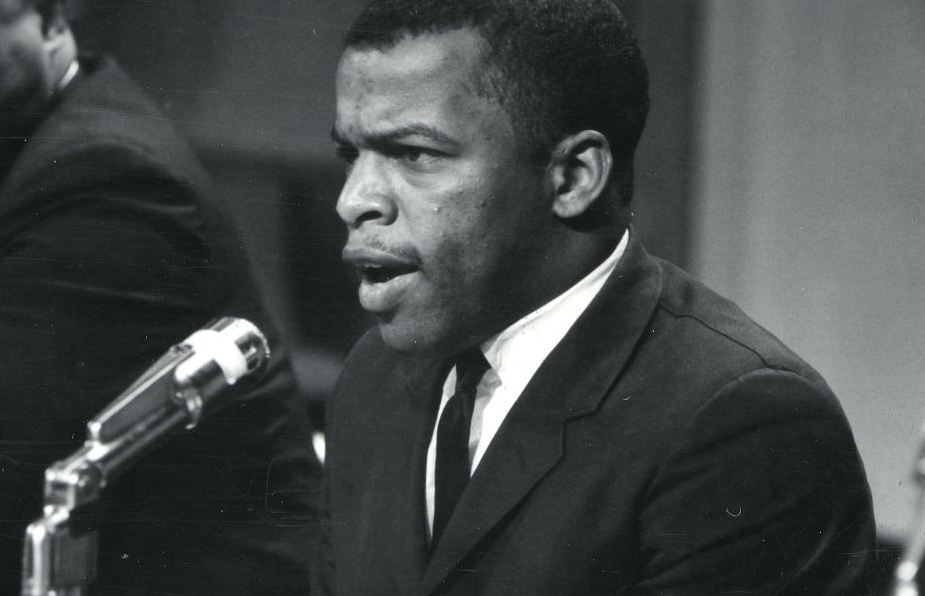
By 1965, the isolation Lewis felt in Troy began to replicate at SNCC. Other leaders of the group were beginning to turn on him and his ideals.
Stokely Carmichael and H. Rap Brown were agitating within the organization, arguing that “Black Power” would never be granted — that it had to be seized, by force if necessary. Lewis lost support for being too chummy with President Johnson, and King and his Southern Christian Leadership Conference.
Carmichael soon maneuvered himself to replace Lewis and banished all white workers from SNCC — along with the notion of nonviolence. Lewis’ ouster remained a sore point for the future congressman, and he turned down offers to work with SNCC on other projects in the years that followed.

Chapter 4
Shift to politics
Lewis continued working on anti-discrimination and social justice issues after leaving SNCC, but by 1977 he turned his attention to joining institutions he once derided for failing to protect people like him.
He ran for a U.S. House seat in 1977 but lost.
In 1981, Lewis ran for Atlanta City Council and won in a landslide. He made a pledge at his first election-night victory party to “bring a sense of ethics and moral courage to the council.”

In 1986, Lewis ran again for Congress, this time against his friend Julian Bond, and won in a bitter contest that divided the two civil rights warriors.
“If someone had told me when I was growing up that one day I would be here, serving in the House of Representatives, I’d say, ‘You’re crazy, you’re thinking the unthinkable,’” Lewis said.

Lewis quickly became one of the most liberal voices in the U.S. House. His Democratic colleagues dubbed him “the conscience of the Congress” as he lent his moral compass and oratory to the biggest debates of the day.
He opposed the Persian Gulf War in 1991 - and, later, the Iraq War. He repeatedly accused President George W. Bush’s administration of lying, and was among the first to call for Bush’s impeachment.
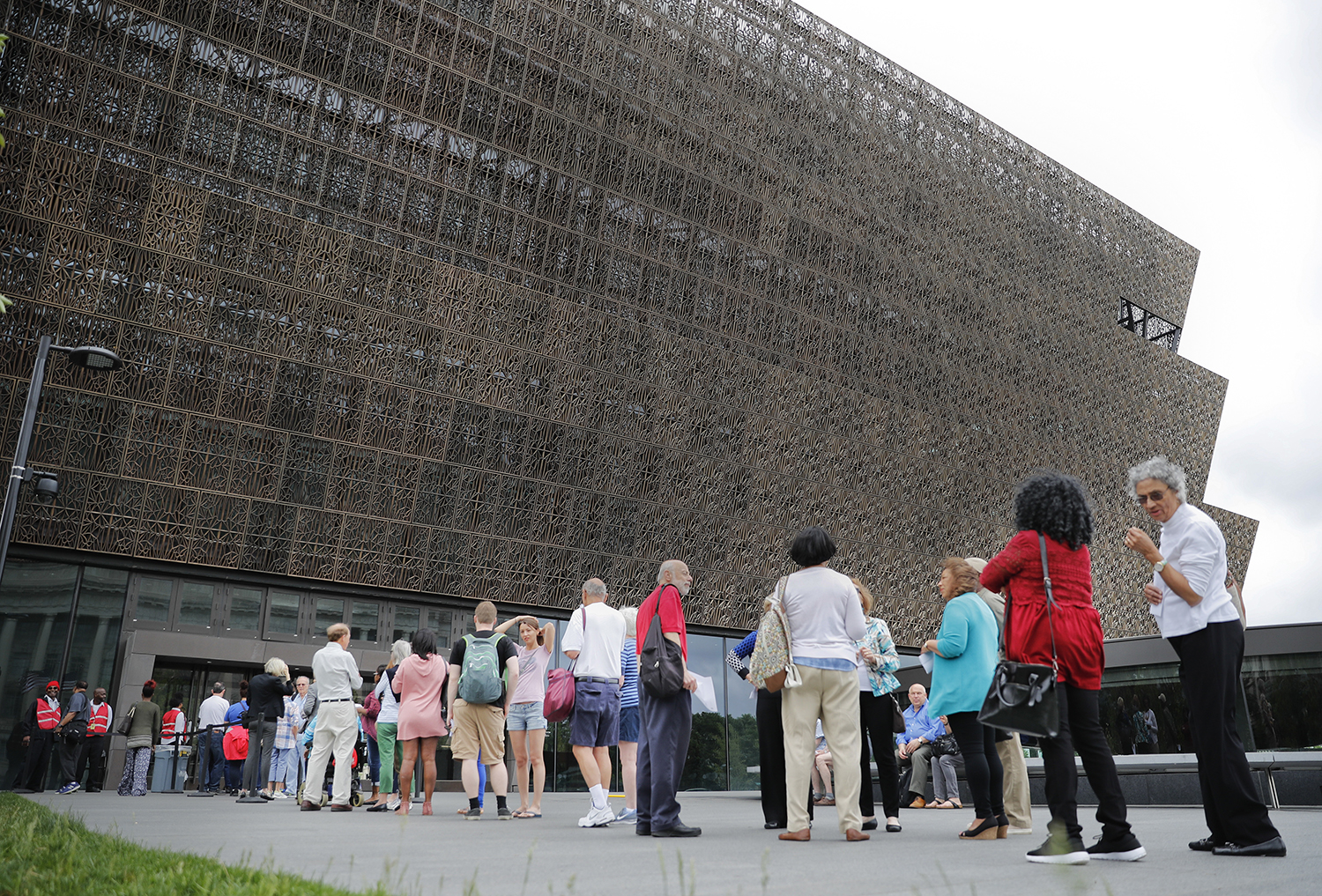
He was a critic of his Georgia colleague, U.S. Rep. Newt Gingrich, who led the 1994 Republican takeover of the House and became speaker. Lewis repeatedly called for an investigation into a lucrative book deal Gingrich received, which Gingrich later gave up.
Yet Lewis won the respect of a number of top Republicans and worked privately with them to reauthorize the 1965 Voting Rights Act, build an African-American history museum on the National Mall and create a minority health research center at the National Institutes of Health.
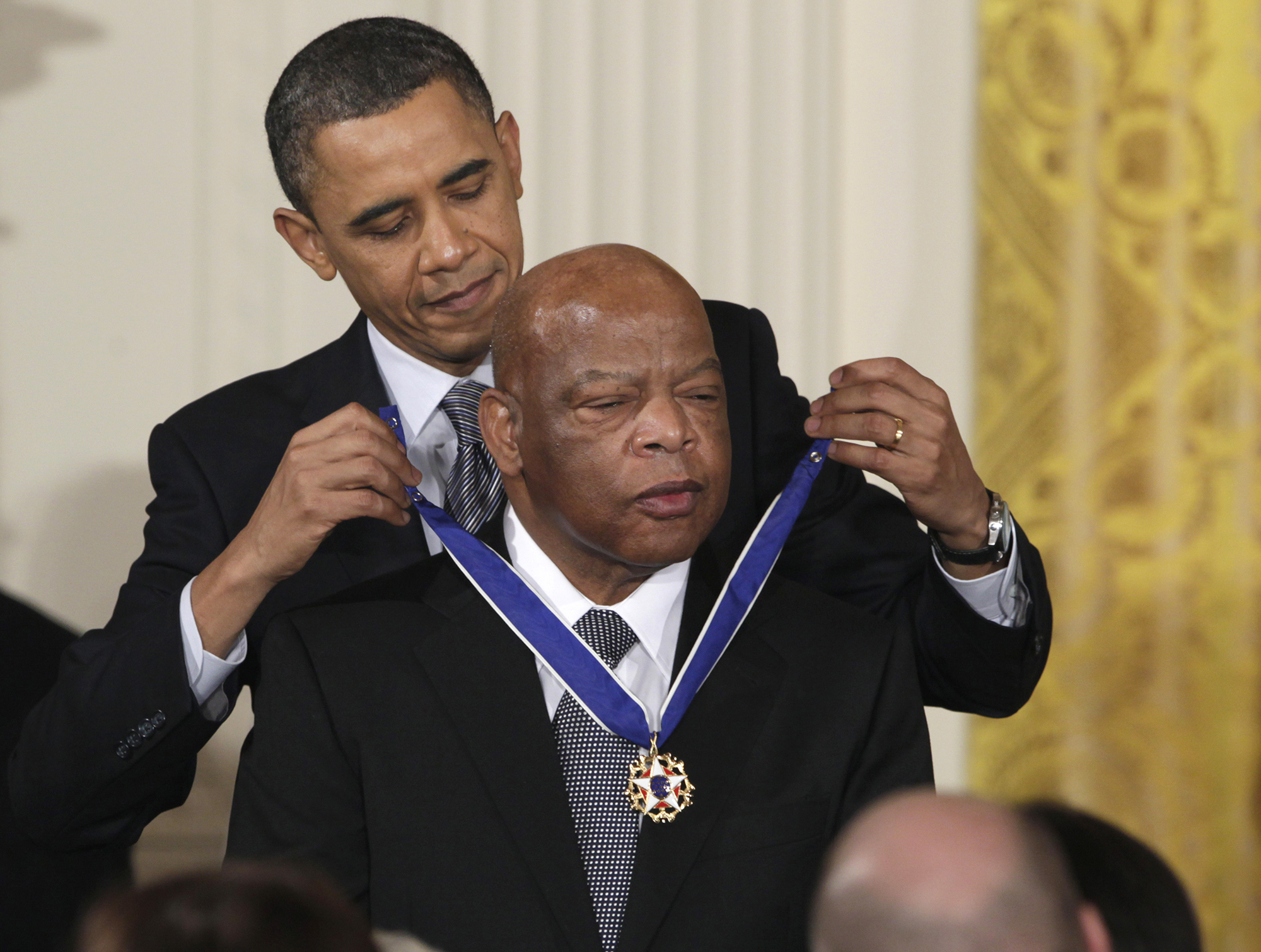
“Generations from now, when parents teach their children what is meant by courage, the story of John Lewis will come to mind.”
Like so many Blacks, Lewis was overcome with emotion at Barack Obama’s presidential victory in 2008. The first Black president later awarded Lewis the Presidential Medal of Freedom, the nation’s highest civilian honor.
“Generations from now, when parents teach their children what is meant by courage, the story of John Lewis will come to mind — an American who knew that change could not wait for some other person or some other time; whose life is a lesson in the fierce urgency of now,” Obama said when presenting the medal in 2011.
It was part of a career denouement for Lewis that saw him crisscross the country to receive accolades and celebrate civil rights milestones. One of the youngest civil rights leaders had become one of the last living ones, his memories in high demand, his stature enhanced by his continued presence in Congress.
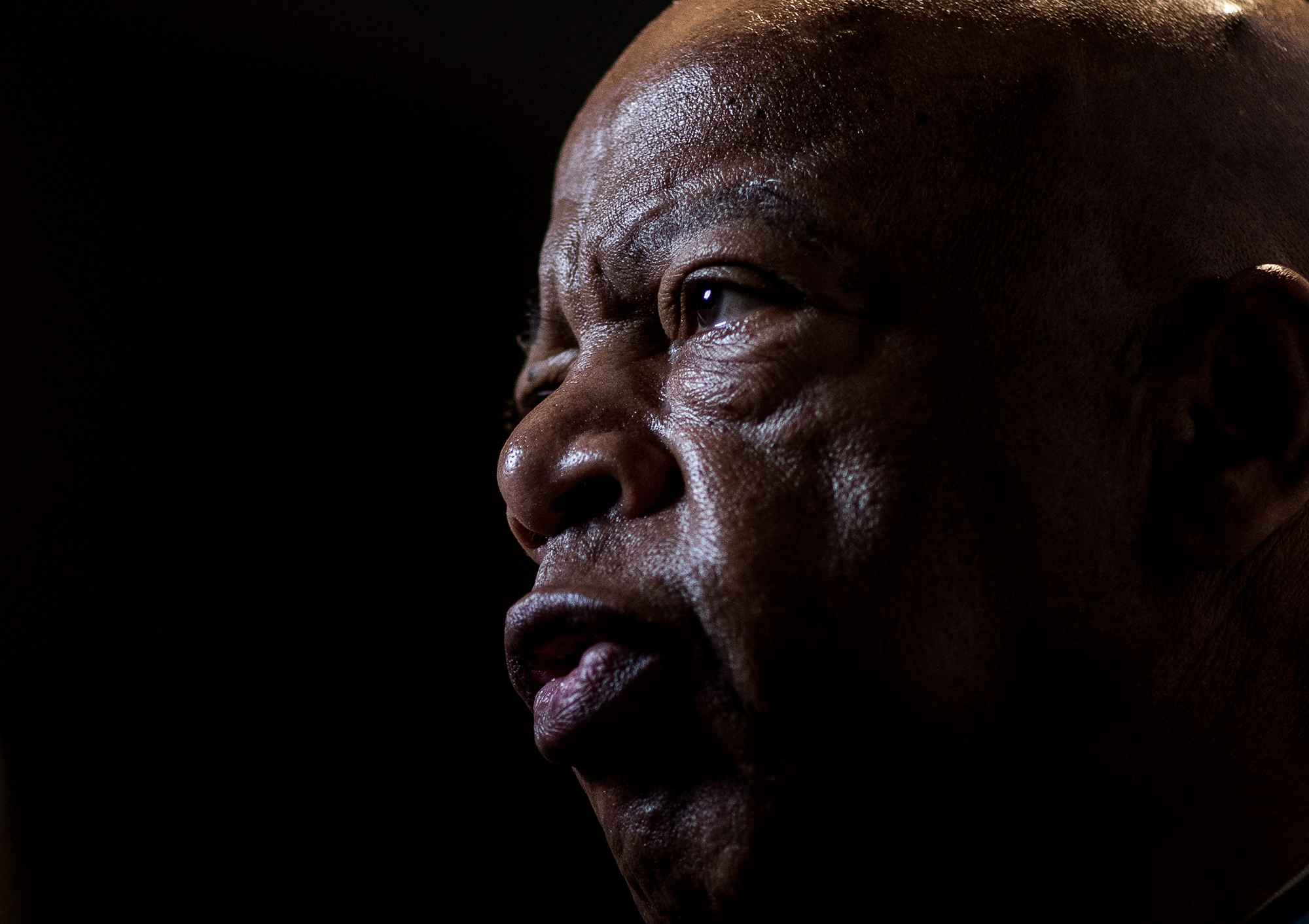
Chapter 5
‘Reliving my life’
In recent years, Lewis continued to find ways to press his colleagues on what he saw as unfinished business in the quest to end injustice.
After 49 people were fatally shot at an Orlando nightclub in 2016, Lewis led House Democrats in a sit-in on the House floor to press the GOP to advance gun control legislation. The group huddled around Lewis and sang protest songs like “We Shall Overcome” for nearly 26 hours. When Republican leaders cut the C-SPAN camera feed, dismissing the protest as a political stunt, Democrats broke House rules by streaming the events live from their cellphones.
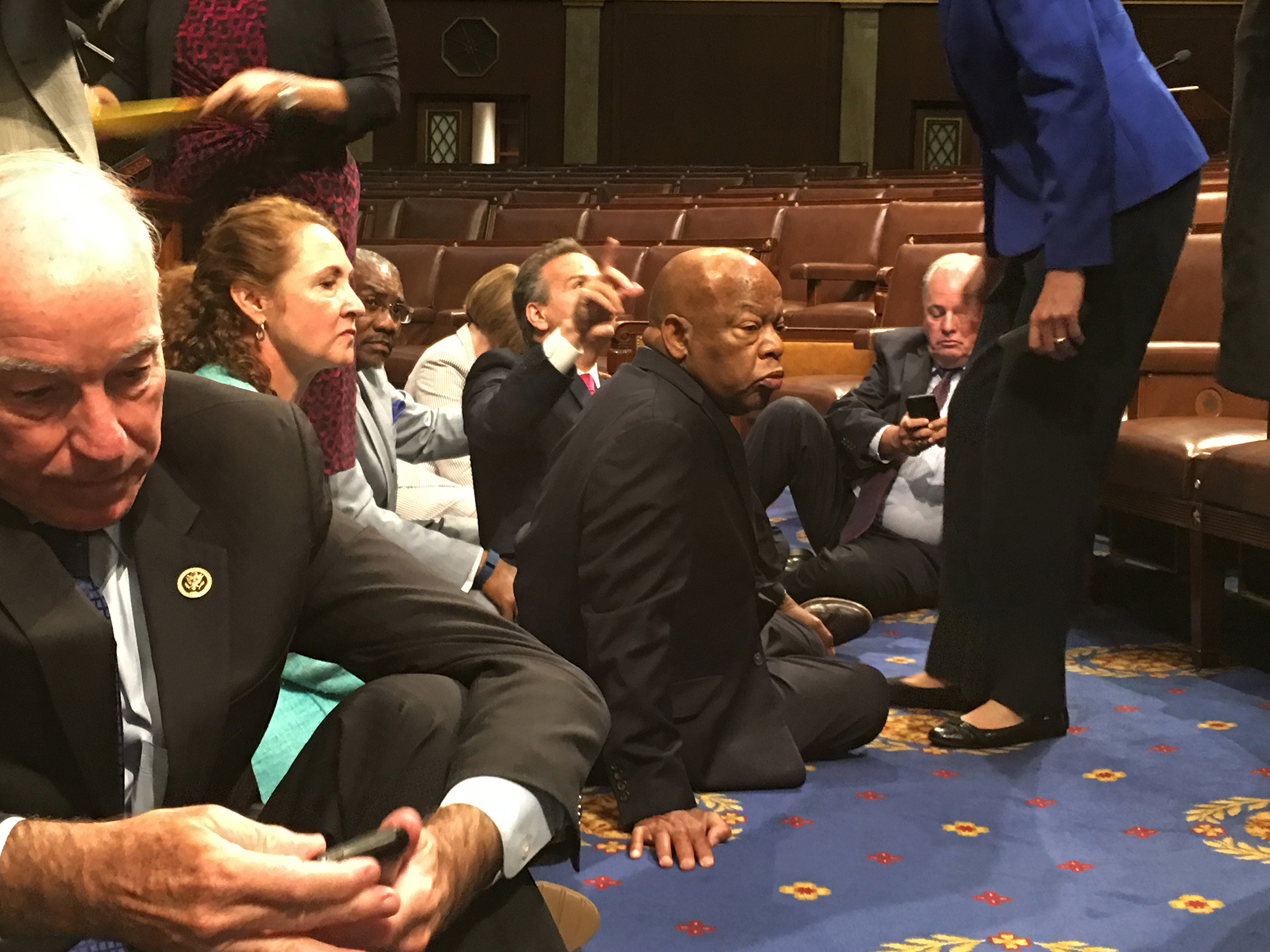
“Sitting there on the floor, I felt like I was reliving my life all over again,” Lewis later recounted. “During the ’60s the sit-ins started with three or four people, and they spread like wildfire. This will spread.”
Lewis added a new title to his lengthy list of accolades in 2016, when he won the National Book Award for the third installment of his graphic novel trilogy about the civil rights movement, “March.”
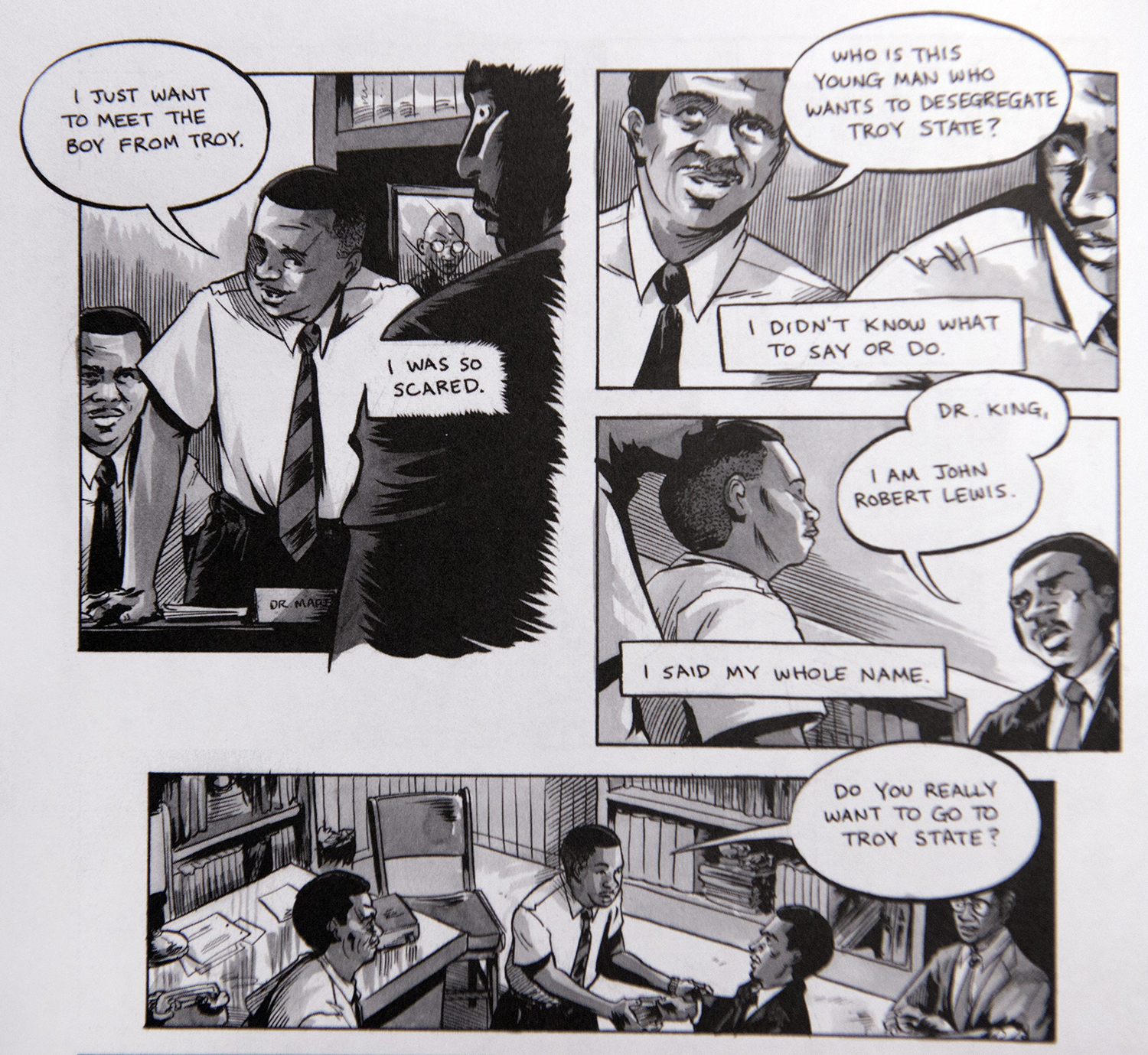
He reemerged on the political frontlines in late 2016, when his comment that he didn’t see Trump as a “legitimate president” prompted a sharp rebuke from the then-president-elect on Twitter.
“Congressman John Lewis should spend more time on fixing and helping his district, which is in horrible shape and falling apart (not to mention crime infested) rather than falsely complaining about the election results,” Trump said.
From that moment on, Lewis boycotted Trump’s addresses to Congress and refused to appear with him in public.
Despite that, Lewis was initially reticent about publicly joining his Democratic colleagues who were lining up in favor of launching an impeachment inquiry against Trump. That changed in late September 2019 after details leaked about Trump pressing his Ukrainian counterpart to investigate the Biden family.
Trump never had kind things to say about Lewis, but he did quietly help the Democrat achieve one of his most sought-after legislative priorities when he signed a bill creating Georgia’s first national historic park at Atlanta’s Martin Luther King Jr. National Historic Site in 2018.

Lewis announced in December 2019 that he had stage 4 pancreatic cancer, an aggressive disease that claims the lives of nearly three-quarters of its victims within a year of diagnosis.
“I’ve been in some kind of fight – for freedom, equality, basic human rights – for nearly my entire life,” Lewis said. “I have never faced a fight quite like this one.”
News of Lewis’ death prompted an outpouring of grief from political leaders, civil rights alums and celebrities on social media.
Former President Bill Clinton and ex-Secretary of State Hillary Clinton said the nation “lost a giant.” Gov. Brian Kemp said Lewis “changed our world in profound and immeasurable ways.”
A notably heartfelt tribute came from Obama, who said his career was made possible by Lewis and his sacrifices.
“Not many of us get to live to see our own legacy play out in such a meaningful, remarkable way. John Lewis did,” Obama said in a written statement. “And thanks to him, we now all have our marching orders — to keep believing in the possibility of remaking this country we love until it lives up to its full promise.”

Staff writers Tia Mitchell and Bob Kemper contributed to this article.
